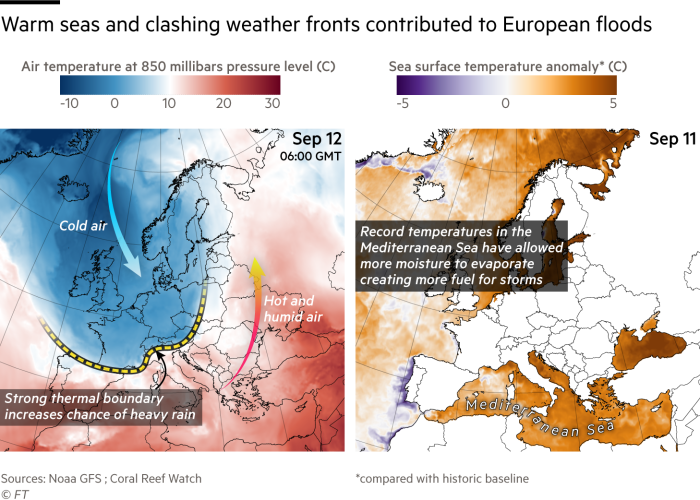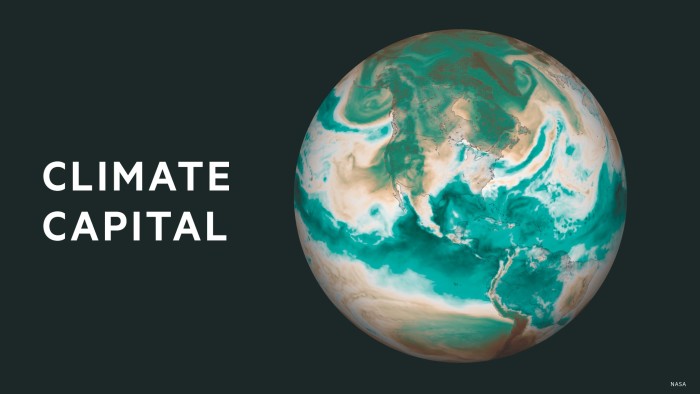Unlock the Editor’s Digest for free
Roula Khalaf, Editor of the FT, selects her favourite stories in this weekly newsletter.
The pledge by European Commission president Ursula von der Leyen to make up to €10bn of recovery funds available for the deadly European floods this week followed estimates that insurers would face up to €3bn in claims.
The near-stationary low-pressure system given the name Storm Boris became stuck between two high-pressure systems, generating incessant rainfall across central Europe for several days, resulting in more than two dozen estimated deaths across 20 countries.
Thousands of homes and businesses, along with vehicles, infrastructure, and agriculture, were inundated across Poland, the Czech Republic, Slovakia, Austria, Hungary, Slovenia and Romania. Authorities warned that waters could continue to flow through cities in the coming days. The storm moved to northern Italy by the end of the week, causing residents of the Emilia-Romagna region to be evacuated.
Reinsurance broker Gallagher Re said in a report midweek that there was a “growing expectation” that the flooding in recent days would be one of the region’s most costly extreme weather events on record.
Advanced forecasts and investments in flood defences had limited the potential losses, however, Gallagher Re added. For example, Prague deployed a series of mobile and fixed barriers that were put in place after disastrous floods in 2002.
Reinsurers and insurers’ attention had been increasingly focused on the European flood peril in recent years, the broker said, following several costly events in 1997, 2002 and 2013. Earlier in 2024, significant flooding in southern Germany also resulted in at least $2bn in insured losses.
Storm systems that originate near the Gulf of Genoa were notorious for generating high-impact flooding events, the reinsurer noted, including those in southern Germany and parts of central Europe in May and June this year.
While each weather event had a different set of meteorological factors involved, the record warm sea surface temperatures in the Mediterranean and resulting evaporation have fuelled the storms this year.

The world has experienced its hottest three-month period to August on record. This month has so far brought a continuation of extremes, with floods on four continents, including the most recent affecting Vietnam and China and the southern US states, as well as a surge in wildfires in areas such as the Amazon and Portugal.
Devastating floods in west and central Africa in recent weeks have resulted in the deaths of an estimated 1,000 people and the displacement of hundreds of thousands.
The international cohort of climate scientists known as the World Weather Attribution research group have yet to release their findings about how much global warming has contributed to the occurrence of the most recent events.
Its co-founder Friederike Otto said this week, however, that the record heat observed over the past 12 months would have been impossible without climate change and that it had contributed to six out of eight of the heatwaves studied. The group’s preliminary report on the European floods is expected next week.
But the floods had continued “a stretch of months and years which has seen large annual variability dealing with intense drought and or anomalous rainfall across Europe”, said Gallagher Re. “These swings are consistent with climate change research, which suggests an elevated frequency of shifts from one weather extreme to another.”
Climate Capital

Where climate change meets business, markets and politics. Explore the FT’s coverage here.
Are you curious about the FT’s environmental sustainability commitments? Find out more about our science-based targets here












